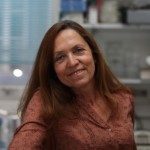Link to Pubmed [PMID] – 2905138
Ann. Inst. Pasteur Immunol. 1988 Sep-Oct;139(5):557-67
Numerous Plasmodium falciparum antigens contain repetitive amino acid sequences. Two blood stage antigens, Pf11-1 and Pf332, were characterized in our laboratories and present high cross-reactivities, defining a family of cross-reacting antigens. In this report, we show that amino acid sequence homologies might explain these cross-reactivities, but that they extend to polypeptides from the host, namely thymosin-alpha 1 (T alpha 1). An antiserum raised in chickens and Saimiri monkeys against the synthetic Pf11-1 peptide cross-reacts with synthetic T alpha 1. Synthetic Pf11-1 and Pf332 peptides share some of the biological activities of T alpha 1. These results are discussed with respect to the mechanisms devised by malaria parasites for escape from the host immune response.

